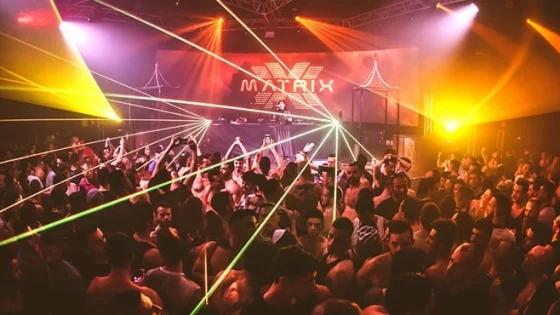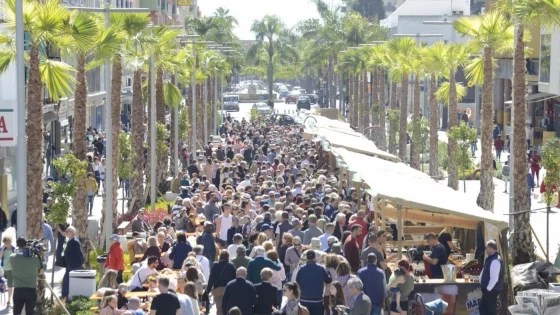
The Carnival of Malaga is undoubtedly one of the most picturesque and anticipated winter festivals in the capital of the Costa del Sol. For three weeks, the city is filled with colors and art to honor the carnival god, celebrating contests, parades, parties, performances, and all kinds of unique activities that will astonish visitors.
To enjoy the Malaga Carnival with friends, the best option is to rent a 7-9 seater car at Malaga Airport and explore the city to discover both the most popular and lesser-known events in each of its neighborhoods.
In this post, we gather everything you need to know to enjoy the Carnival of Malaga like a local, known as the “Warm Winter Party,” from its origins to its activity schedule so that you don’t miss anything.
Table of Contents
Everything You Need to Know About Carnival of Malaga
To enjoy the Carnival of Malaga, it’s essential to know its history, understanding each of the activities that take place in this festival, one of the most popular festivals in Malaga. Also, knowing the most important days of the celebration to not miss out on anything.
History of the Carnival of Malaga
The Carnival of Malaga is a festival celebrated every year in February, preceding Lent. Its history dates back over 500 years when parodies were performed in which a choirboy dressed as a bishop.

However, it was in the 19th century when the Carnival Society in Malaga was established, promoting street performances and a festive spirit. In 1887, the first Carnival with a defined program was celebrated, including parades, dances, and costume contests.
During the 1980s, with the arrival of democracy and freedom of expression, the spirit of the Carnival resurged. Music returned to the streets, and the revival of the festival was promoted. During that time, there were explanations before performances to educate and raise awareness about the history of the Carnival.
From 1983 onwards, this festival grew exponentially and became a prominent celebration with the participation of murgas (street bands) and choirs. Thus, the carnival became a deeply rooted celebration in which the people of Malaga participate to maintain its festive and multicultural spirit.
Useful Information About the Carnival of Malaga
For those attending the Carnival of Malaga for the first time, its program can be complex since the main activities are spread throughout the city for almost a month. Therefore, it’s important to know some of the most important details.
What are the dates of the Carnival of Malaga?
The celebration of this picturesque festival is influenced by Holy Week in Malaga, so the dates often vary, although it usually falls in the month of February.
It lasts for approximately 15 days, beginning with the inaugural conference featuring a distinguished guest and concluding with the festivities on the weekend before Ash Wednesday, where some of the most eye-catching events of the Carnival take place.
Main Activities of the Carnival of Malaga
Throughout the weeks of this festival in the capital of the Costa del Sol, all kinds of activities take place, ranging from the formal to the eccentric. Here are some of the main events of the Carnival of Malaga:
Inaugural Conference
This event marks the opening of this popular festival and is usually solemn and formal, emphasizing the history of the Malaga Carnival and highlighting its roots and culture.
Choir Group Singing Competition
One of the central elements of the Carnival of Malaga is the Choir Group Singing Competition (COAC), known by locals by the name of the festival itself. It lasts for approximately two weeks, with its final stages taking place at the legendary Cervantes Theater.

In this competition, groups of people from Malaga form different comparsas (carnival groups), murgas (street bands), choirs, and quartets. They choose a theme and create their costumes, scenery, and lyrics to sing about current topics with humor, satire, and catchy rhythms.
This competition takes place in theaters that require tickets for entry to witness one of its final stages, so it is recommended to purchase these tickets to enjoy one of its final rounds.
Later, many of the groups will perform for free on the streets.
Grand Carnival Gala
This gala follows the Grand Final of the COAC, marking the beginning of the main and most attractive tourist activities of the Carnival of Malaga. During this event, a popular carnival figure delivers a proclamation, and the Carnival God and Goddess are chosen.

From this moment onwards, the comparsas from the COAC and other clandestine groups that did not participate in the competition take to the streets to sing their songs to the residents and visitors for two weekends, one of the most beautiful activities of this festival.
Carnival Sunday
Carnival Sunday includes the youth proclamation and the selection of the Carnival God and Goddess of the younger generation, although the main attraction is the Grand Carnival Parade. There is also a carnival song carousel and a Grand Final among the street groups.
Carnival Friday
One week after Carnival Sunday, the final weekend of this festival takes place. On Friday, visitors can witness the Children’s Parade and the colorful Drag Queen Gala in Constitution Square.
Costume Saturday
Saturday is dedicated to costumes, being one of the most visual days of the Carnival of Malaga. It’s ideal for families with children and features costume contests, parades, and one of the highlights of this festival: the Battle of Flowers on the central Calle Larios.
The Battle of Flowers is a historical reenactment of when the working class threw flowers at the nobility riding in carriages during the carnival. Bags of flower petals and over a ton of confetti are distributed, and participants throw them at each other to recreate this historic moment symbolizing class struggle.
Piñata Sunday
Piñata Sunday marks the conclusion of the Carnival of Malaga with the Burial of the Anchovy, one of the most colorful and emotional parades for the people of Malaga. It begins on Calle Larios and ends on Malagueta Beach, where a large bonfire is lit, and the colorful anchovy figure is burned.

Visitors are also treated to cartons of fried anchovies for tasting. Afterward, the Burial of the Anchovy takes place at sunset, bringing the Carnival of Malaga to a close.
Map of the Carnival of Malaga
Once you are familiar with the most important events and approximate dates of the Carnival of Malaga, this map will help you locate some of its most emblematic sites, from the Cervantes Theater to Calle Larios, so you can plan your tourist route.
From CarGest, we offer you the possibility to use a parking at Malaga Airport to leave your vehicle during the holidays, and from there take the C1 line to the center.



